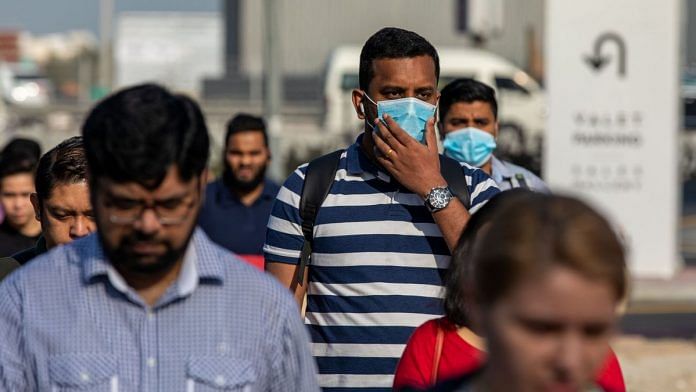New Delhi: The government has assured people that there have been no community transmission of COVID-19 in India, as the coronavirus pandemic spreads around the world.
This clarification, Thursday, came days after the health ministry’s earlier claim of having observed such cases.
In a statement on 5 March the health ministry had said that a few cases of community transmission have been observed in India.
The statement read: “Since, in addition to COVID-19 cases related to travel, some cases of community transmission have also been observed, it has been decided to involve district collectors and states have been asked to form rapid response teams as the district, block and village levels.”
On Thursday, however, Luv Aggarwal, joint secretary in the health ministry, denied any community transmission of COVID-19 in the country.
ThePrint explains what community transmission means and how it affects efforts to contain the spread of the virus.
Also read: COVID-19 leads to ‘paranoia’, ‘gloomy’ economy & questions for governments
What is community transmission
The term community transmission means an illness spreads in such a way that the source of its infection is not known. One can catch an infection from other people — at work or while out shopping — and from people who “probably don’t think” they have it.
If a person is diagnosed with COVID-19, her or his infection is either linked to travel history to a country where the disease is widespread, or if that person has come in contact with someone who is already infected.
But when the source of transmission for a large number of people is not traceable it is called a community transmission.
US had confirmed its first case of community transmission last month. Since then, a number of American states have reported similar instances of coronavirus patients with no travel history or contact with infected people.
Cases of community transmission have also been confirmed in the UK, Australia and Indonesia.
Most types of influenza and bird flu outbreaks in the past were known to have spread through community transmission. The outbreak of H1N1 in 2009, commonly known as swine flu, was primarily through community transmission.
Why is it worrisome
The Indian government has been closely monitoring the outbreak in the country through contact tracing.
Contact tracing means when a case of coronavirus is detected, each individual with whom the patient has come in contact is closely monitored. If necessary, these individuals can be kept in isolation to prevent the infection from spreading further.
In the case of community transmission, contact tracing is inadequate in containing the disease. This is because any person — irrespective of whether she or he has been exposed to an already infected person or have travelled to affected countries — remains vulnerable.
This is particularly worrisome for health officials because that means the virus is in the community but no one knows where it has come from or track its origins. This also means the virus can be widespread in a community.
How fast is COVID-19 spreading in India
Of the first 50 cases that were detected in India till 10 March, a majority had foreign travel history. Only 11 had contracted the disease within the country, all of whom were known to have come in contact with known COVID-19 patients.
The government has, however, not revealed travel history of the 25 new cases since then.
Also read: Delhi govt. directs immediate shut down of public swimming pools amid coronavirus panic



